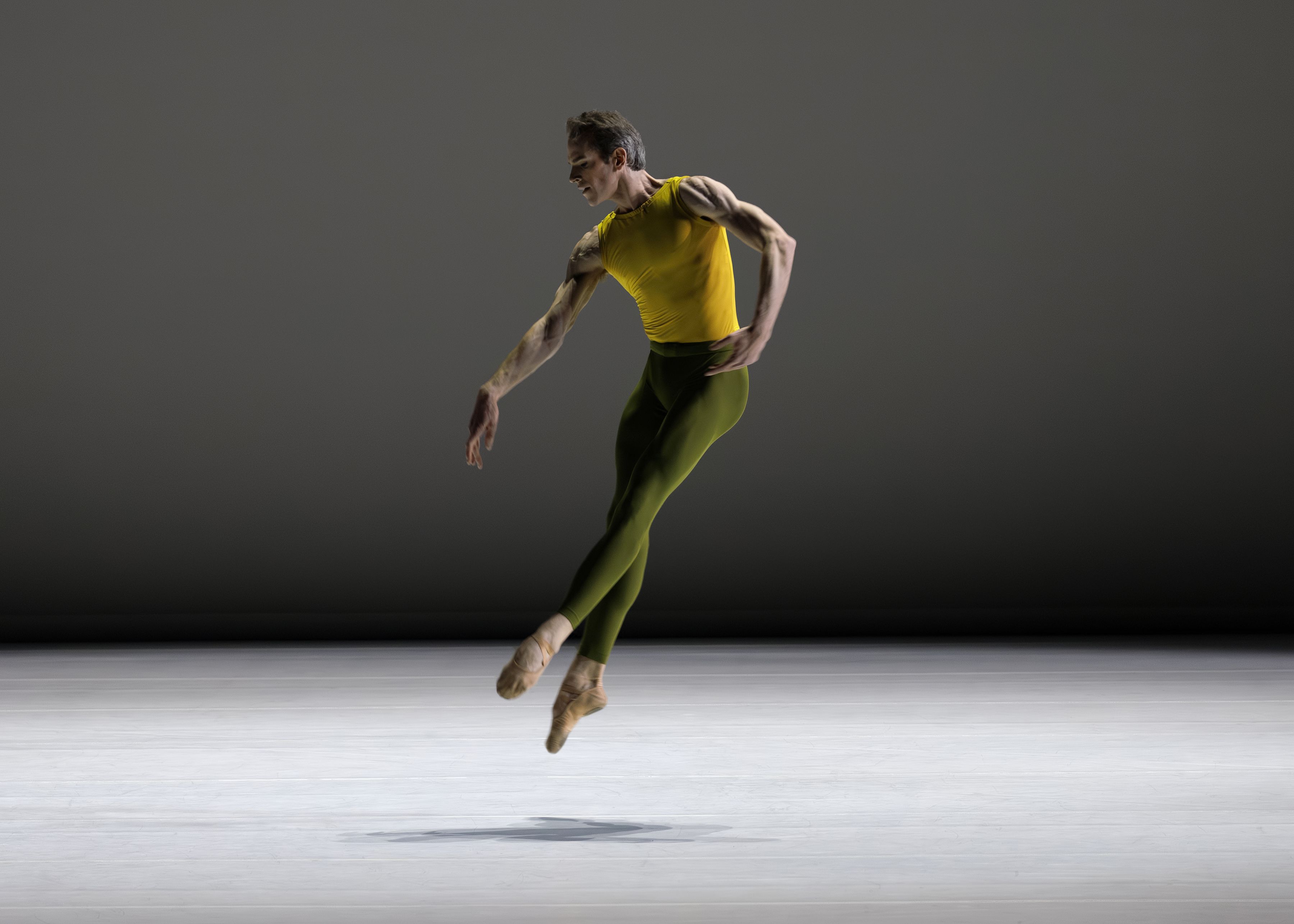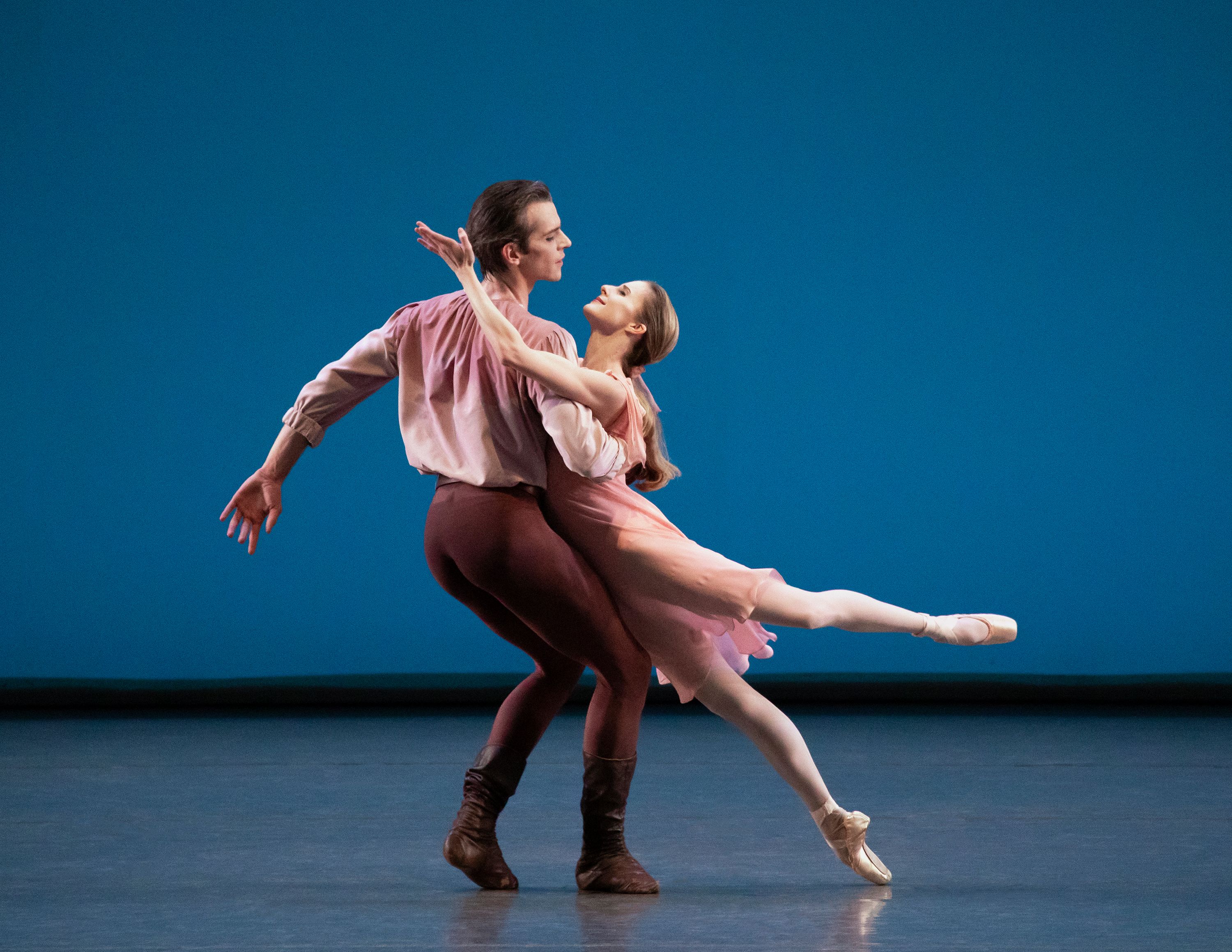
5 Questions with... Russell Janzen
, August 22, 2023
Born in Bridgeport, Connecticut, and initially trained at The Rock School in Philadelphia, Pennsylvania, Principal Dancer Russell Janzen attended summer sessions in 2004 and 2005 at the School of American Ballet and enrolled as a full-time student in the winter of 2005. He became an apprentice with New York City Ballet in October 2007, joined the Company as a member of the corps de ballet in June 2008, was promoted to soloist in October 2014 and to principal in February 2017. He received the 2007 Mae L. Wien Award for Outstanding Promise and the 2015 Clive Barnes Foundation Award.
While a dancer with the Company, Janzen has performed featured roles across the repertory, including in George Balanchine's Cortège Hongrois, The Four Temperaments, and Robert Schumann’s “Davidsbündlertänze”; Jerome Robbins' Dances at a Gathering, Glass Pieces, and In the Night; Justin Peck's Copland Dance Episodes, Everywhere We Go, and Year of the Rabbit; Christopher Wheeldon's Polyphonia, Mercurial Manoeuvres, and Les Carillons; Mauro Bigonzetti's In Vento; and many more. He has originated featured roles in Peck's Bright and The Most Incredible Thing; Matthew Neenan's The Exchange; Pam Tanowitz's Law of Mosaics and Solo for Russell: Sites 1-5; and others.
Following more than 16 years onstage with the Company, Janzen's farewell performance will be in the Diamonds section of Balanchine's Jewels on Sunday, September 24 at 3 PM. We spoke with him before he embarks on his final fall with NYCB to ask about his most lasting influences, favorite roles he's danced, what he's most pleased about on the horizon, and more.
Who has been an important influence or inspiration to you as a performer?
Adam Lüders, who was a principal dancer with NYCB from 1975-1994, has been a major source of support, inspiration, and guidance for me throughout my career. There have been many tall dancers in the Company over the years, but I always hoped to be like Adam, who was distinct, enigmatic, unusual, and a beautifully clean dancer. When I first began dancing principal roles I sought out videos of his performances, finding that his dancing often showcased both his technical purity and his creativity. Watching these tapes encouraged me to be more bold in my own choices onstage as I took on many of the roles that had once been his. Soon after becoming a principal in 2017, I reached out to Adam in hopes of learning from him, and he has now worked with me in the studio on countless roles, offering insights that opened up my dancing while encouraging me to find my own way of interpreting parts that he'd left his own mark on during his career. Adam has been a mentor, an artistic inspiration, a valued teacher, and a good friend.

What are your favorite roles to perform?
I‘ve enjoyed many different roles over the years for all sorts of reasons, but in the last few seasons my favorite ballets to dance have been Dances at a Gathering and Copland Dance Episodes. Both offer moments of real danciness as well as the sense of being on a communal journey. Also, the Rodeo pas de deux and the pas de deux in the scherzo section in Dances are two of the most wonderful things to dance.
What are you looking forward to about this next phase in your life?
There is a lot of body stress for me as a dancer. I’ve dealt with many injuries over the years, some of which kept me from dancing and some of which I needed to learn to dance with. While I’ve learned to navigate my body better as the years have gone on and I don’t get as worked up about every ache and pain, I really can’t wait to not worry in the same way about how my body feels or might be feeling. I imagine it’ll be a big relief.
Are there any roles or ballets that you wish you’d had a chance to perform?
I got to dance in pretty much every ballet I had hoped to be a part of. I’ve been incredibly fortunate in that regard. That being said, I would have loved to try out other ways of being onstage—maybe parts that involved more acting or angularity. One role I wish I could have worked on is the death figure in In Memory of…. I was often cast in more mannered and romantic roles and it would have been fun and a real challenge to channel that almost violent intensity onstage and to explore being more creature-like and angsty. I do also wish I had had the chance to work more with Alexei Ratmansky. I loved being in the corps of Namouna, a Grand Divertissement and Concerto DSCH, and I learned Pictures at an Exhibition (my absolute favorite) for years. There was definitely a time when my body was feeling good and I relished every intense physical challenge I faced—I would have given anything to work with him then and to dance in any one of his ballets.

Was there a pivotal moment in your career that helped shape who you are today?
While I had danced a few feature roles before, my first time performing with Tess [former Principal Dancer Teresa Reichlen] in Diamonds felt like a big turning point—like I was embarking on an entirely different chapter in my career. Dancing something of that scope and enjoying it felt incredible. I think I fell in that show when I was doing a double assemblé into the wings, but overall I was pretty thrilled by the whole experience and was so excited for everything that was to come. Sharing that first big moment with Tess also cemented a kind of trust and intimacy for us that served as the foundation for the partnership we developed over the next however-many years.
Anatomy of a Dance
Russell Janzen on Peter Martins’ Swan Lake
Russell Janzen talks about the importance of the Black Swan pas de deux in the dramatic action of Swan Lake, and the level of trust required between himself and the ballerina in the role of Odette/Odile (Teresa Reichlen) that helps convey the emotional connection the two characters share.
Inside the Repertory
Russell Janzen on Glass Pieces
As dancer Russell Janzen notes, Jerome Robbins’ Glass Pieces may be an abstract ballet with an experimental score by Phillip Glass, but it’s also rooted in the real world, especially the feeling of driving, pulsing undercurrents found just by walking through New York City.



